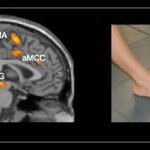Neuroscience

In a study on fetal alcohol syndrome, researchers were able to prevent the damage that alcohol causes to cells in a key area of the fetal brain by blocking acid sensitive potassium channels and preventing the acidic environment that alcohol produces. The cerebellum, the portion of the brain that is responsible for balance and muscle coordination, is particularly vulnerable to injury from alcohol during development.
The researchers also found that although alcohol lowers the amount of oxygen in the blood of the mother, it is not the lack of oxygen that damages the fetal cerebellum, but the…

Many sports teams select their uniforms based on the mascot, city or country they are representing and not on a referee’s preference or bias but a new study has found that choosing the color red for a uniform in competitive sports can actually affect the referee’s split-second decision-making ability and even promote a scoring bias.
Psychologists Norbert Hagemann, Bernd Strauss and Jan Leiβing from the University of Münster specifically found that referees tended to assign more points to TaeKwon Do competitors dressed in red than those dressed in blue. The researchers presented 42 experienced…

Over the last decade, childhood obesity has grown into an epidemic, reflected in soaring rates of type 2 diabetes and recommendations that pediatricians check toddlers for elevated cholesterol.
What hasn't been as clear is how early to intervene.
A study presented at a pediatric research program on Friday suggested obesity prevention efforts should begin as early as age two, when children reach a "tipping point" in a progression that leads to obesity later in life.
"This study suggests that doctors may want to start reviewing the diet of children during early well-child visits," said John W.…

Researchers have discovered new genes linked to schizophrenia, it has been revealed.
In two papers published in Nature today (July 30), scientists identify four mutated gene regions that may hold the key to producing new tailor-made drugs to treat the devastating mental illness.
It is hoped the finds, which are likely to galvanize the field of psychiatric genetics, could also lead to earlier diagnosis of the disorder, which affects around one in every 100 people.
The papers report the findings from two large international schizophrenia consortia, including pioneering Scottish researchers…

Along with all the other changes that come with age, healthy older people also lose some capacity for sleep, according to a new report published online on July 24th in Current Biology, a Cell Press publication. When asked to stay in bed for 16 hours in the dark each day for several days, younger people get an average of 9 hours of shuteye compared to 7.5 for older people, the researchers report.
The study also found that most healthy people, and young people in particular, don't get as much sleep as they need.
The idea that sleep changes markedly across the life span isn't new. In fact,…

In a major step in understanding how the nervous system and the immune system interact, scientists at The Feinstein Institute for Medical Research have identified a new anatomical path through which the brain and the spleen communicate.
The spleen, once thought to be an unnecessary bit of tissue, is now regarded as an organ where important information from the nervous reaches the immune system. Understanding this process could ultimately lead to treatments that target the spleen to send the right message when fighting human disease.
Mauricio Rosas-Ballina, MD, working with colleagues in the…

Researchers from China, France, Italy, and the United Kingdom, have created a model that shows exactly how, when a baby suckles at a mother's breast, it starts a chain of events that leads to a surge of the "trust" hormone oxytocin in their mother's brain.
The study focuses on the role of oxytocin, a hormone recently found be involved in the enhancement of trust and love in humans and animals. Oxytocin has long been known as the trigger that, when released into the blood, causes milk to be let down from the mammary gland. When oxytocin is released within the brain, it strengthens the bond…

New evidence that the brain regions responsible for vision are capable of adapting in adults offers new hope for those with an untreated condition commonly known as lazy eye. Also called amblyopia, the condition is the most prevalent cause of visual impairment in a single eye, affecting about six million people in the United States alone.
"If not detected early enough—before seven to twelve years of age—the condition has been considered untreatable because the brain wasn't thought to be plastic enough," said Benjamin Thompson of McGill University in Canada. "The main message here is to show…

If you've said you're going to 'sleep on it' in regards to a difficult decision, you know it became a cliche' for a reason - it often works. Swiss scientists have discovered that sleep can have lasting consequences on brain function by stimulating new brain connections that strengthen the learning processes and directly influence our actions.
Speaking at the Forum of European Neuroscience, Dr. Sophie Schwartz from the University of Geneva explained that any new experience is encoded in memory, but memory traces can later be forgotten or become more stable and permanent. Among the numerous…

Children between the ages of seven and 12 appear to be naturally inclined to feel empathy for others in pain, according to researchers at the University of Chicago, who used functional Magnetic Resonance Imaging (fMRI) scans to study responses in children.
The responses on the scans were similar to those found in studies of adults. Researchers found that children, like adults, show responses to pain in the same areas of their brains. The research also found additional aspects of the brain activated in children, when youngsters saw another person intentionally hurt by another individual.
"This…